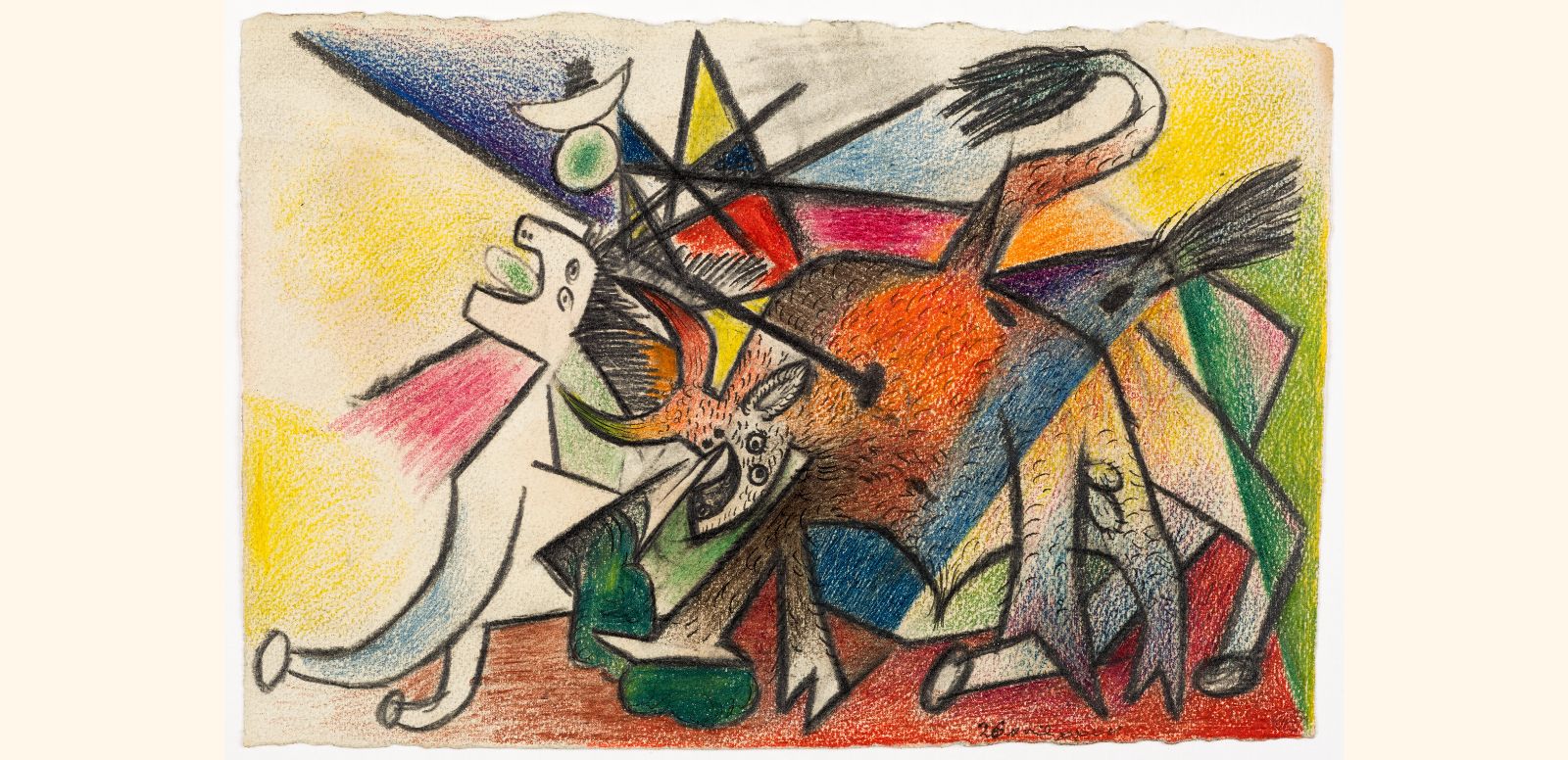
papel de dibujo
17,3 x 25,8 cm
Donación de Pablo Picasso, 1979.
Colección Musée national Picasso-Paris
© Sucesión Picasso, VEGAP, Madrid, 2023.
Pending
The Musée Goya opens the exhibition Goya in the Gaze of Picasso, which will be open to the public from the 30th of June to the 1st ofOctober.
After its reopening in April 2023, following renovation and extension work, the Musée Goya in Castres (France) continues to give space to the great Spanish masters of the 20th century. The museum reopened with an exhibition by Joan Miró and now turns its gaze to the relationship between Pablo Picasso and Francisco de Goya, two artistic geniuses who left a profound mark on the history of art.
From an early age, Picasso showed admiration for the masters of Spanish painting, including El Greco, Velázquez and Goya. Throughout his life, he studied their works and found in them an inexhaustible source of inspiration. With Goya, in particular, he shared a fascination for bullfighting, indignation at the cruelties of the world and freedom of tone and creation.
The exhibition Goya in Picasso's Gaze includes thirty-five works by both artists, organised into three sections. With loans from the Musée National Picasso-Paris, the Louvre and the Bibliothèque Nationale de France, the exhibition establishes a dialogue between the two artists and invites visitors to immerse themselves in a unique artistic journey.
The first section, Corrida de la Pasión: Suertes y Arena, reveals the passion that Picasso and Goya shared for bullfighting and the figure of the bull. Their graphic works reflect this enthusiasm, from Goya's engravings in the series La Tauromaquia, which traces the history of bullfighting from its beginnings, to Picasso's bullfighting drawings and paintings, where bullfighting becomes a sacred expression of the struggle between man and animal.
The second section, entitled Monsters, shows how both artists channelled their existential anguish through the creation of hybrid and monstrous beings. Picasso used the figure of the Minotaur, while Goya depicted deformed and disturbing figures in his engravings.
The exhibition ends with the section Death, which explores the representation of this stage of life in the work of both artists. Through the genre of the still life, Picasso and Goya show the tragic and position themselves as heirs to the artistic tradition of the Spanish Golden Age. This last area brings together two major works, Goya's Still Life with Lamb's Ribs, Loin and Head (1808-1812) and Picasso's Still Life with a Ram's Head (1939).

